Around 50 pairs of high-speed and bullet trains are running between Chengdu and Xi’an every day; around 20 pairs of high-speed and bullet trains are running between Xi’an and Beijing every day. So there is high flexibility for your itinerary if you choose a high-speed train when traveling to these 3 cities. Taking a high-speed train from Xi’an to Beijing doesn’t request you to arrive at the train station 2-3 hours in advance like taking a plane. And almost all the train stations are in the downtown area, which means you will spend less time on the road, so you could have more free time for shopping or sightseeing. In this itinerary, we arrange a high-speed train tour from Chengdu to Xi’an and a from Xi’an to Beijing train tour for you. You will have an in-depth experience of China high-speed train. Of course, all the must-visit attractions of Chengdu, Xi’an, and Beijing are included, like Chengdu Research Base of Giant Panda Breeding, Leshan Giant Buddha, Terracotta Warriors and Horses Museum, the Forbidden City, and the Great Wall. Come and experience China’s speed.

Once you arrive at Chengdu airport, you will be picked up by our tour guide, who will be ready to give a hand whenever you need help during the wonderful trip. Then the guide will take you to your hotel, and your journey in Chengdu begins.
Chengdu, hailed as “Nature’s Storehouse” and “the Heart of the China West”, is the capital of Sichuan Province. At the same time, Chengdu is home to many world-famous tourist destinations including both historical and natural attractions. This 2300-year-old city is quite worth visiting!
In Chengdu, people enjoy the tranquility of a slower pace of life, and like to drink tea and play mahjong as pastimes. Therefore, some hold that people here are those who know how to enjoy life and seize each day. They always are optimistic in life. Tourists in such an environment will also feel very relaxed.
Today, your 9-day China tour begins. In the morning, you will visit the Chengdu Research Base of Giant Panda Breeding after breakfast. It will take about 30 minutes to get there and the whole journey is about 14 KM. To protect endangered pandas, Chengdu Research Base of Giant Panda Breeding simulates the living environment of giant pandas in the wild, which gives giant pandas a comfortable living environment. In China, giant panda is one of the animals that ranks top on the favorite animal list. In addition, the giant panda is also a popular diplomatic ambassador internationally. The earliest record available about panda diplomacy can date back to the reign of Empress Wu Zetian (690 - 705), the only female emperor in ancient China, in the Tang Dynasty (618-907). Empress Wu presented two cute pandas, which were called “white bears” at the time, to Emperor Tenmu of Japan. After the founding of the People’s Republic of China, there was also a diplomatic event about giant pandas. The most famous panda diplomacy occurred in 1972. During the US President Nixon’s visit to China, Premier Zhou Enlai presented the giant pandas “Lingling” and “Xingxing” as national gifts to the American people and they arrived at Washington National Zoo by a special plane. Now you have the chance to visit the giant pandas in their hometown. There are over a hundred pandas here, so you will see more than just one or two pandas when you visit, and if you are lucky, you may see a dozen at once, including adult giant pandas, and giant panda cubs.
Please pay attention to the followings during visiting: do not flap glass (the animals will be afraid); do not throw rubbish into the breeding area; do not feed animals at will; do not make loud noises; do not turn on the flash when taking pictures.
In the afternoon, Du Fu Thatched Cottage and Jinli Old Street are waiting for you to explore! First, you will visit Du Fu Thatched Cottage, which is located in Qingyang District, Chengdu City. It is the former residence of the great poet Du Fu in the Tang Dynasty when he lived in Chengdu. During this time, he composed more than 240 poems, many of which are compiled into textbooks. If you know Chinese, you could learn one of his poems to experience ancient Chinese culture.
Then you will go to Jinli Old Street. Legend has it that Jinli Street was once one of the oldest and busiest commercial streets in ancient Sichuan, and was known throughout the country as early as the Three Kingdoms period (220-280). On October 31, 2004, Jinli Old Street was officially opened to the public as a tourist attraction. Bars, restaurants and souvenir shops are scattered on this thousands-of-year old street. Sichuan was once the Shu Kingdom during the Three Kingdoms period. And the Shu Kingdom was the most powerful and prosperous one of the three kingdoms, so here you can experience how flourishing the city used to be.
Option: This afternoon, you are recommended to enjoy the most popular dinner at a local restaurant, Chengdu hotpot. Chengdu is one of the cities in China that bring you refreshing experiences to taste buds, and the hotpot is the most important thing you should try here. Hotpot excels in not only its flavor but also the atmosphere when people enjoy it: a hotpot is always shared by friends or a whole family. A lively and boisterous atmosphere always accompanies eating.

 Leshan
Leshan Mount Emei
Mount Emei After breakfast, you will visit Leshan Giant Buddha. The Leshan Giant Buddha is located on the east bank of the Nanmin River in Leshan City, Sichuan Province. It takes about 2 hours to drive southwest from Chengdu downtown to Leshan Giant Buddha, a total of about 150 kilometers. As the tallest stone Buddha all over the world, it was constructed in the Tang Dynasty in 713. In ancient times, people believed that the Buddha would calm down the turbulent waters that plagued the ships sailing along the river. Leshan Giant Buddha has many ingenious designs, and its drainage system is a good example: there is a set of hidden drainage systems behind the ears and the head of the Leshan Giant Buddha, which plays an important role in protecting the Giant Buddha from rain erosion. Even on the big Buddha’s collar folds, there is a drainage system. In 1996, Leshan Giant Buddha was listed as the World Cultural Heritage.
Then you will head to Mount Emei. It takes about 50 minutes to drive west from Leshan Giant Buddha to get there, and the total distance is about 50 kilometers. Mount Emei is located at 30 degrees north latitude, a mysterious and peculiar latitude that runs through the four ancient civilizations. The pyramids, the Sphinx, the Hanging Gardens of Babylon and the Bermuda Triangle, these mysterious places are all located at 30 degrees north latitude. Mount Emei is also a magical place with abundant species, more than 2300 kinds of animals. While you are traveling in this area, you may see some naughty monkeys begging for food from visitors, which is a major feature of this scenic spot. Meanwhile, Mount Emei has profound religious culture, and there are 30 existing temples, and more than 850 cultural relics protected in these temples. Besides, Emei Martial Art is one of the three major Chinese Martial Art factions. Emei Martial Art originated in Mount Emei, with more than 80 sects and hundreds of kinds of boxing. Its development has been promoted by merging with Buddhism, Taoism, and Confucianism.
In the afternoon, you will visit the Baoguo Temple on Mount Emei. The Baoguo Temple, built in the Ming Dynasty(1368 - 1644), is 533 meters above sea level. The whole temple covers an area of more than 40000 square meters. Besides, there’s a legend about this temple. It is said that there were a group of people who sincerely practiced Buddhism doctrine and wanted to find a place in tranquility to cultivate themselves. After searching for days and nights, they were exhausted. One night they stopped at the bottom of a cliff outside the Baoguo Temple and fell asleep, leaning against the cliff. Their perseverance touched the Buddha. Then the Buddha let the old trees on the cliff stretch out their roots to surround them and make a piece of tranquil land. With a good environment, these people became famous monks at that time after constant learning.
After the visit, you will go to your hotel and check in.


 Chengdu
Chengdu Today, you will keep exploring Mount Emei, including Golden Summit and Leidongping Temple. You will also see other buildings and picturesque peaks on the road to the Golden Summit.
Leidongping Temple, formerly known as the Hall of Thunder God, is located on a mountain slope at an altitude of 2,000 metres. It was built in the Han Dynasty(202 BC-220 AD). It’s said that there was an iron monument on the side of the temple, which prohibits visitors from making a loud noise, which may cause thunder and rain. According to legend, there were 72 caves under Leidongping Temple, where the Dragon God and the Thunder God used to live. In ancient Chinese mythology, both the Thunder God and the Dragon God are responsible for rainfall. When there was a drought, nearby peasants came here to pray for rain. They throw dead pigs and dogs into the caves as sacrifices. It is said that each time a prayer was made, it was fulfilled.
Climbing Golden Summit is the shared wish of tourists as well as pilgrims when visiting Mount Emei. Here, people can not only burn incense (a ritual of expressing sincerity in Buddhism) to worship Buddha, but also enjoy the magical landscape of nature, including the sea of clouds and Buddha's light. Buddha’s light refers to a unique circle rainbow with a people’s figure in it. It is an astonishing natural phenomenon that many tourists, especially Buddhists, wish to see. If you are lucky, you will also see it.

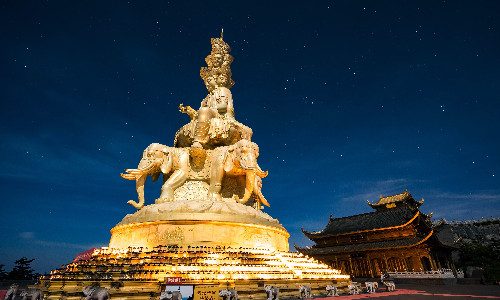
 Xi’an
Xi’an On the fifth day, you will say goodbye to Chengdu and head to another city in China, Xi’an. You will take the estimated high-speed train G1836 09:40/13:39 to Xi’an. After arrival in Xi’an, your Xi’an guide will pick you up at the railway station and transfer you to your hotel. The food on the train is always not as delicious as that in restaurants. So we will prepare a packed lunch for everyone which consists of a sandwich, a piece of fruit, and a drink.
After arriving, your guide will take you to visit Xi’an City Wall. It is also known as Xi’an Ming City Wall because it was built in the Ming Dynasty (1368―1644). It is the largest and the most complete ancient city wall in China. Standing on the wall, you will have a panoramic view of the old city area of Xi’an. Besides walking on the wall, you can also rent a bike by yourself. There are single-ride bikes as well as double-ride and triple-ride bikes for rent, so you can choose to ride one bike with your love or kid.
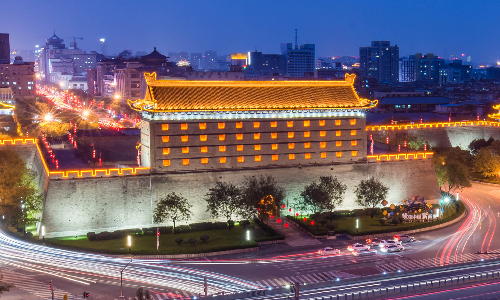
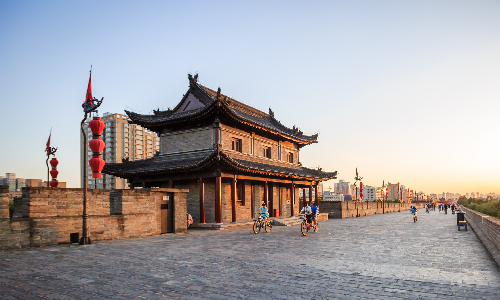
After breakfast, we will head to the Terracotta Warriors and Horses Museum, which is about 51 KM away from the center of Xi’an and takes about 50 minutes. It is in the northeast of Xi’an. The Terracotta Warriors and Horses is the subordinate tomb of the tomb of Qin Shi Huang, the first emperor in Chinese history. It is said that upon his accession to the throne, Qin Shi Huang summoned the Prime Minister Li Si and issued several decrees for Li Si to carry out. One decree was to pick out over 700,000 convicts from prisons across the country to build a tomb for Qin Shi Huang. Another decree was to find thousands of pairs of young boys and girls from all over the country, and bury them alive with Qin Shi Huang after he dies. When Li Si heard the first decree, he thought it is feasible since building a tomb for the emperor would be a punishment for the criminals. But when Li Si heard the second one, he found it unacceptable. Thousands of boys and girls were to be buried with him, would that not tear thousands of families apart! Li Si stopped Qin Shi Huang for the reason that he had just recently ascended the throne and such a move would not be conducive to the stability of the country. The emperor felt that what Li Si said made sense, but he still thought that there should be people buried with him. Li Si was a quick thinker and immediately suggested that he could order the craftsmen to make human figurines with clay, which could replace the real people. Qin Shi Huang readily agreed. Li Si quickly asked a large number of craftsmen to design, mold and modify clay figurines day and night, and finally made it. After seeing the results, Emperor Qin Shi Huang was very pleased, and thousands of boys and girls were saved.
In the afternoon, we will go to the Big Wild Goose Pagoda. The Big Wild Goose Pagoda is a well-preserved holy place for Buddhists, and was built in the Tang Dynasty. The pagoda was to store the Buddhist scriptures and statues that Master Xuanzang (an eminent monk in the Tang Dynasty) brought back from ancient India. Legend has it that one day when Master Xuanzang was walking in the desert on his way to ancient India to worship Buddha, he lost his way for a gale. Worse still, with little food and water left, he was on the verge of desperation. But Xuanzang still sat on his knees and chanted scriptures. At this time, a wild goose flew around him, and then led him to find the water and the way out of the desert. Thus, he named the pagoda the Big Wild Goose Pagoda.
At last, you will have some free time at the Muslim Quarter. Muslim Quarter is home to over 20,000 Muslims in Xi’an. Visitors come here mainly for its Muslim food and souvenir market. Along this street, you can taste a collection of authentic Islamic snacks such as mouth-watering Roujiamo (Chinese hamburger), Zenggao (steamed glutinous rice with red dates or candied dates), etc. If you like to explore novelties, I will recommend the Red Chili Oil Gelato. It combines sweet and spicy, and though you may feel strange at first, you will want more after the first bite!
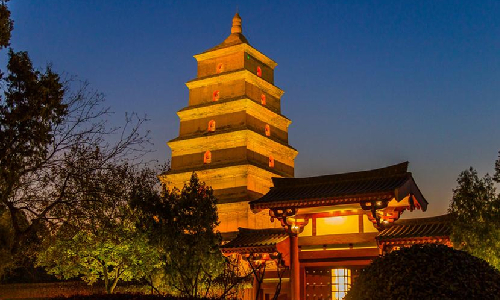
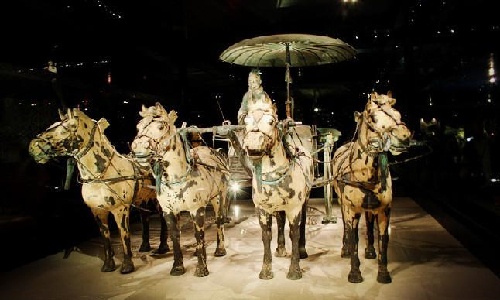
 Beijing
Beijing This morning, you will be transferred to the train station and take the estimated high-speed train G656 10:16/15:33 to Beijing. In the afternoon, your Beijing guide will pick you up at the train station and escort you to your hotel.
Free Time Idea: Wangfujing Street gathers famous delicacies from Beijing and other cities, with more than 100 shops and stalls. In addition to snacks, there are old booths that are specialized in selling and producing folk handicrafts. Here you may see some skilled craftsmen and you could chat with them to learn more about traditional Chinese handicrafts. Then you may wonder what you can buy in Wangfujing Street. Kebab, sugar-coated figurine, or tea soup are all worth trying.
After breakfast, we will go to Tian’anmen Square. Tian’anmen Square is located at the center of Beijing and can accommodate 1 million people for grand gatherings. Every New Year's Day, many people flock here to watch the first flag-raising ceremony. Moreover, the founding ceremony of China was held here in 1949.
Then you will visit the Forbidden City (closed each Monday), which is also known as the Palace Museum. As the imperial palace of the 24 emperors of the Ming (1368-1644) and Qing(1636-1912) Dynasties in China, the Forbidden City is one of the best-preserved ancient wooden-structure building groups around the world. The buildings in the Forbidden City in Beijing are divided into two parts: the Outer Court and the Inner Court. The Outer Court is composed of three main palaces: the Hall of Supreme Harmony, the Hall of Central Harmony and the Hall of Preserving Harmony. The Inner Court is also composed of three main palaces: the Palace of Heavenly Purity, the Hall of Union, and the Palace of Earthly Tranquility. The six palaces are the main buildings you will visit in the Forbidden City.
After lunch, your guide will take you to visit the Summer Palace. Originally named Qingyi Yuan, the Summer Palace was built as a summer resort in the Qing Dynasty. The main attractions here include Kunming Lake, Suzhou Street, Longevity Hill and Long Corridor, etc. As an important walkway in the Summer Palace, the Long Corridor is well-known for its length of 728 meters which is the longest in Chinese gardens. There are more than 14,000 paintings (the content of these paintings includes landscape and myths) on the beams of the corridor. Therefore, in this corridor, you will see a different painting with every step you take.
Then you will visit the Temple of Heaven. In the Ming and Qing Dynasties, the Temple of Heaven was the place where the emperor offered sacrifices to heaven and prayed for good harvests. The Circular Mound Altar is an important building here. Every winter solstice, the emperor held a ceremony to worship heaven on the Circular Mound Altar. The Mound Hill Altar is a three-story open-air round platform. The exquisitely designed altar allows the sound of the person (the emperor) who stands in the center to be reflected three times, forming echoes from all directions. The ancients were unaware of the theory of echoes and believed that this phenomenon was a dialogue between man and heaven. So through this ceremony, heaven could hear the emperor’s pray.
Option: Peking Roast Duck Dinner
As a famous Chinese cuisine, Peking Roast Duck is a must-try when you come to Beijing. It is well-known for being crispy on the outside and tender on the inside, and the meat is fat but not greasy. Beijing Roast Duck has become increasingly popular day by day, and its fame even spread all over the world. Now you have the opportunity to savor the most authentic Peking Roast Duck.
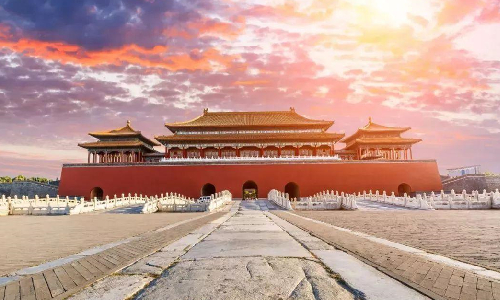
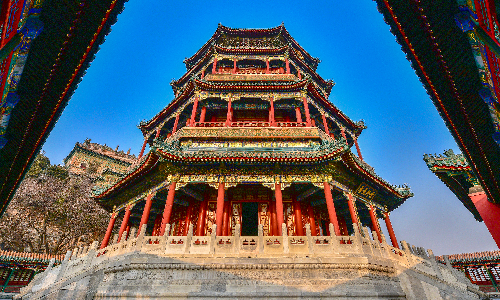
Your trip to China has come to an end today. After breakfast, your guide will pick you up at your hotel and take you to the airport according to your flight schedule.
Editor: Chang Shijin
Proofreader: Summer Hou
| City | Five Star hotel list | Four Star hotel list |
|---|---|---|
| Chengdu | Sofitel Chengdu Taihe | Holiday Inn Express Chengdu Jinniu |
| Xi'an | Tianyu Gloria Grand Hotel Xi'an | Sunworld Dynasty Hotel |
| Beijing | Sunworld Dynasty Hotel Beijing Wangfujing | Sunworld Hotel Wangfujing |
 |
![]() About your child or infant, please contact us for a discounted price.
About your child or infant, please contact us for a discounted price.



We started with a few days in Beijing & ended in Shanghai, from where we visited the Forbidden City and Great Wall. In between we visited Terra Cotta Warriors Museum, Panda Base, Shanghai Disneyland.

We had a wonderful holiday in China which will remain long in the memory. China is a breathtakingly beautiful country full of splendid temples and palaces, mountains and rivers, peaceful rural scenes and bustling shopping streets.
 QUICK ENQUIRY
QUICK ENQUIRY